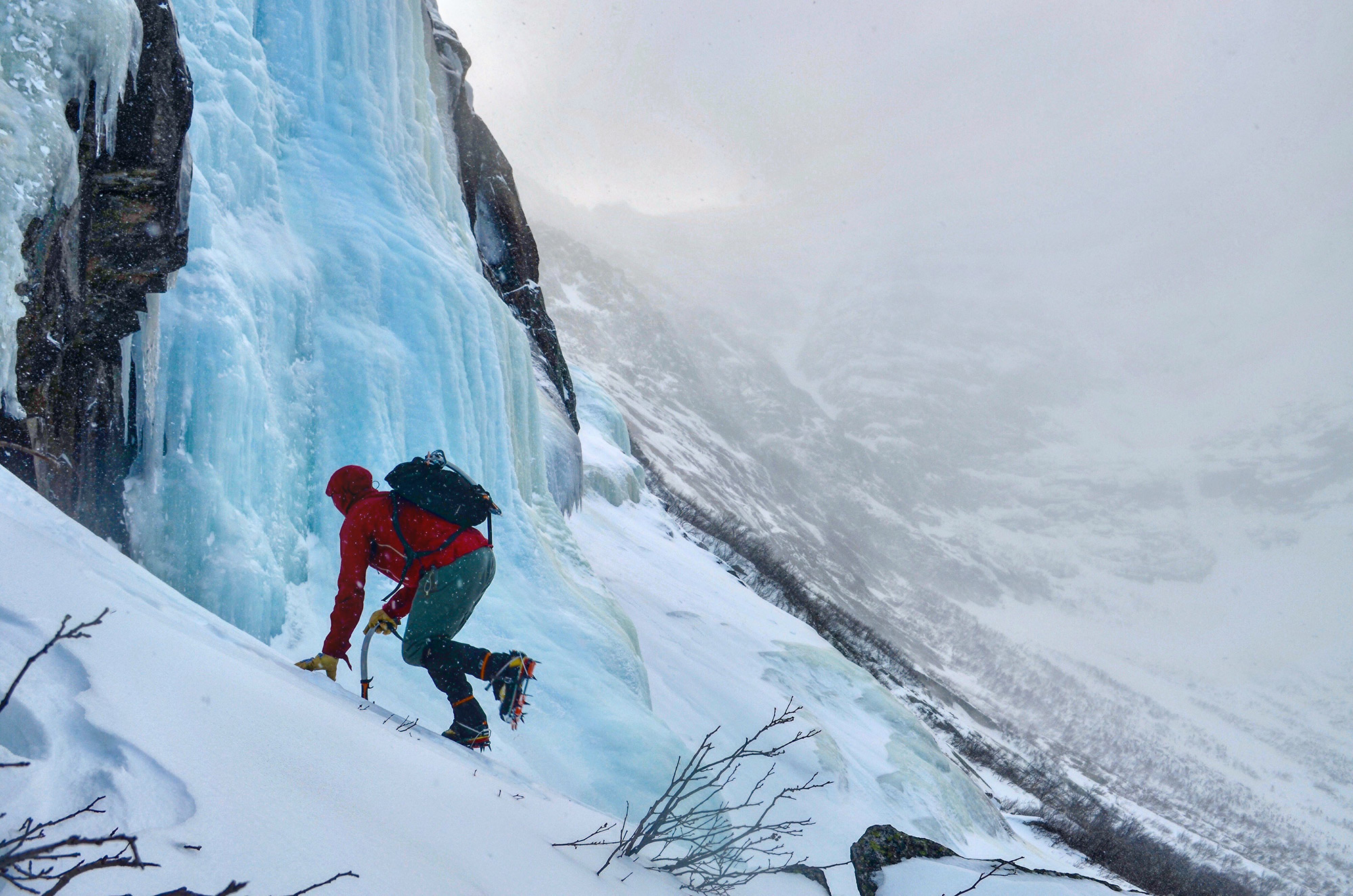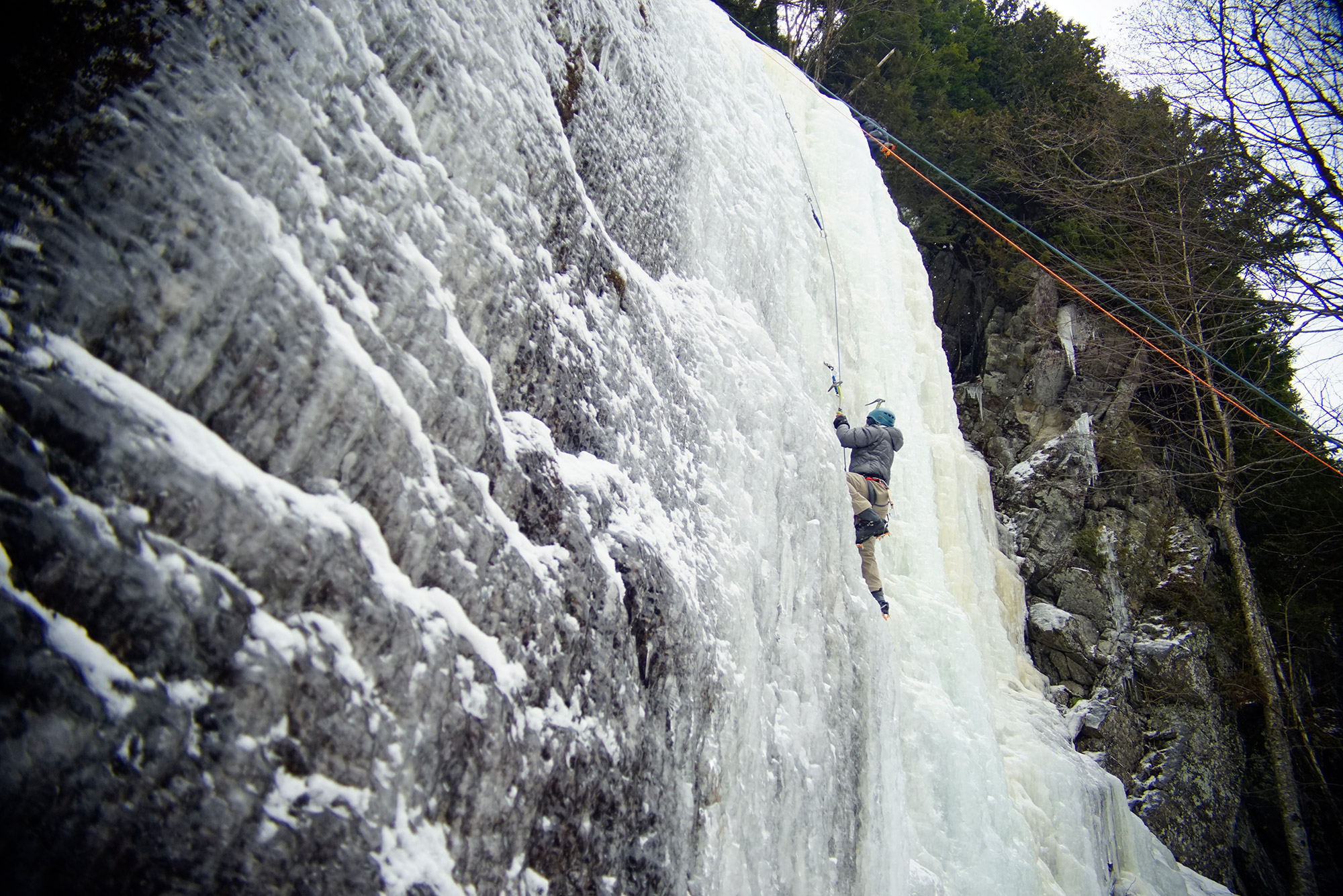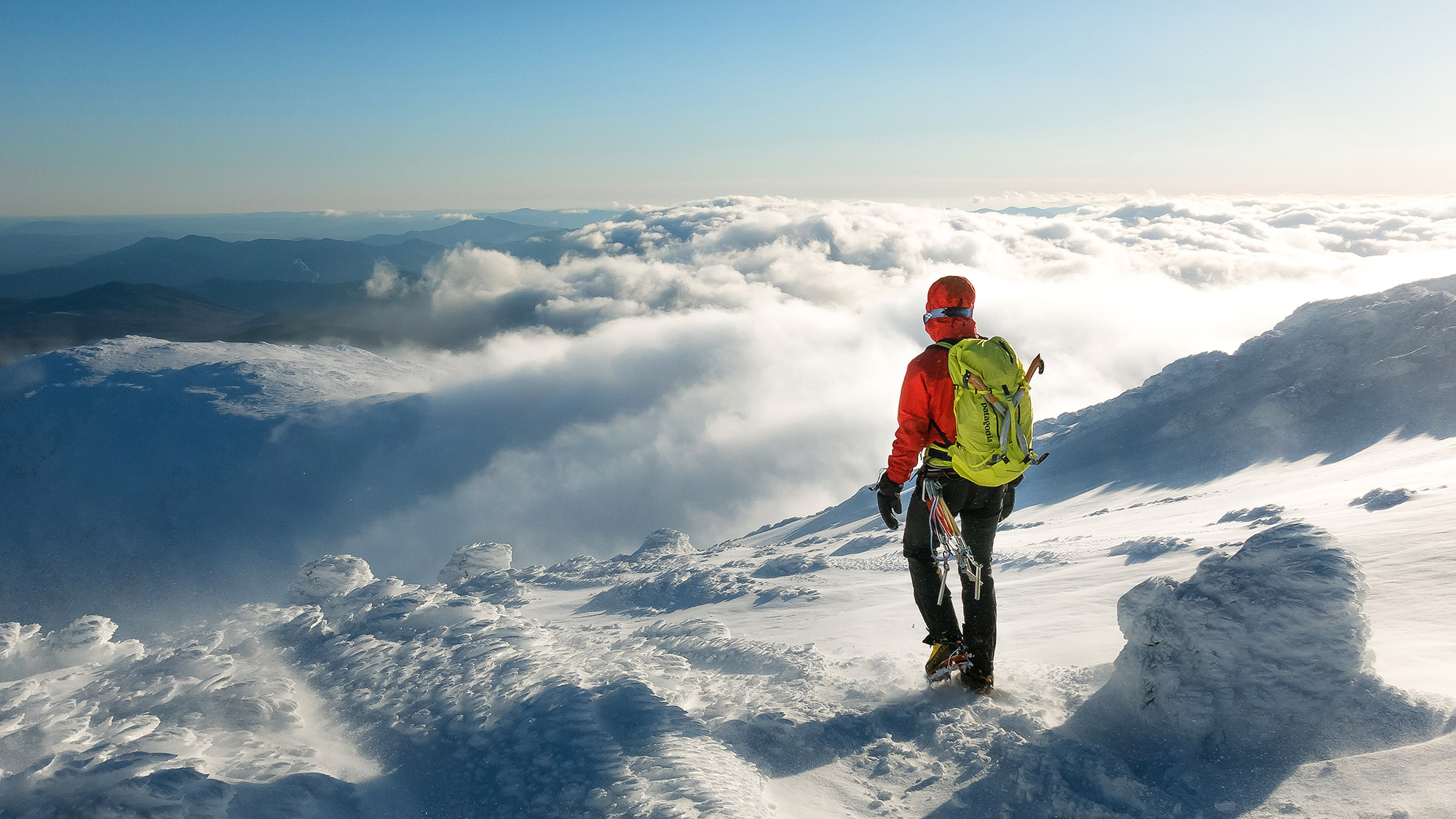With temperatures dropping across the Northeast, the ice is starting to form, and ice climbing season is kicking into gear. To get you going, here are eight tips to help you sharpen everything from your tools to your skills for sending that perfect pitch or goal gully this season.

1. Sharpen your picks
Nothing takes the fun out of ice climbing more than dull tools. The inability to sink a stick melts stoke faster than the mid-winter thaw. If you’ve never sharpened your tools or it’s just been awhile since the last time you did, now’s a great time.
The goal of sharpening is to replicate your tools’ original shape. Doing so only requires a mill bastard file. Begin by filing off the rounded point at your pick’s end, and then, put the bevel back on the pick by filing outwards on each side, following the factory grind. When you’re done sharpening, use a hex wrench to make sure your picks are tight.
Pro tip: Use a vice when sharpening your tools instead of balancing them in your hands to save yourself the embarrassment of a season-stalling puncture wound or stitches.

2. Add some grip
After perfecting your picks, add some grip tape to your axe shafts. A layer of tape improves grip and helps insulate your hands from the cold. Furthermore, it makes it easier to distinguish your tools from your partner’s and protects against the scratches that come with use. Depending on how much grip they want, climbers use everything from electrical tape to skateboard deck tape.
3. Sharpen your crampons
Although most associate ice climbing with axes and upper-body muscles, the real magic happens with your feet. Because of this, you’ll want to sharpen your crampons before jumping on the sharp end this season. In fact, because crampons often get used to approach climbs and descend them, they typically dull faster than tools. As such, it’s a good idea to give them a quick sharpening after every ice outing.
If you have crampons with vertical front points, like the Black Diamond Cyborgs do, use the mill bastard file as you did for your ice tools to sharpen your crampons’ front points along the factory bevel. And, don’t forget about your crampons’ secondary points. It’s recommended to file the secondary points on their backside, so as to not change their length and affect performance.
Pro tip: Once again, use a vice. With all those points, a mid-sharpening slip with your crampons can be even more hazardous than with your ice axes.

4. Dial in the fit
Getting to a climb, only to realize you haven’t sized your crampons to your boots, is no way to start a day, much less a season, of ice climbing. Adjusting crampon length is most often done with a pin-lock system on the center bar, and while making adjustments is easy, it’s finicky work best done at home, without gloves. Doing this at the base of the cliff will leave you with cold hands before you even start climbing.
When adjusting, you want to achieve a tight fit without the boot overhanging the front or back of the crampons’ frame. As a good at-home test to tell if you’ve adjusted correctly, put your boot in the crampon. If you pick the boot up and the crampon comes up with it, without being formally attached to the boot, you are on the right track.
5. Protect your protection
Dull ice screws can put a damper on an ice climbing outing. At best, they’ll be hard to sink into the ice; at worst, they won’t thread into the ice, leaving climbers in a treacherous situation. To make matters worse, it seems you always come across the dull screw on your rack when you’re most desperate for protection.
Until recently, most ice climbers sent their screws out to be sharpened. Then, Petzl unveiled the LIM’Ice, a device that makes sharpening ice screws straightforward and easy. Of course, if you’ve had your ice screws for a few years, it might be time to upgrade. Newer ones like the Black Diamond Turbo Express have speed knobs for easy placement; light-colored hangers instead of black, which speeds up melting out; and two places to clip ‘biners, which help to declutter busy belays.

6. Get your head in the game
Before going out to make your first climb of the season, it’s worthwhile to brush up on your mental game. Spend some time reading up on technique, thinking about movement, and practicing the requisite rope work to get your mind in mid-season form.
If you’re planning on climbing alpine gullies, refresh your avalanche awareness, and refamiliarize yourself with your beacon, probe, and snow safety kit. Not confident in your skills? Consider taking an early season avalanche class or ice climbing lesson with the Eastern Mountain Sports Climbing School. Whether you’re looking to get up to date with the latest in snow safety or just pick up a few pointers, an early season class gives you knowledge you can use all season.
Pro tip: Practicing companion rescue with your avalanche beacon is a great way to pass the time in between those too-cold-for-rock-climbing and no-climbable-ice-yet weekend days.
7. Tune up your body
Doing some sport-specific exercises before your first outing will pay big dividends. Even better, you don’t need a fancy gym to get yourself into ice climbing shape.
For your upper body, simply hanging from your tools on a pull-up bar or hangboard is a great way to build grip strength and prepare for what is coming. Mix some pull-ups using your tools in with the hangs to further build upper-body strength.
Of course, ice climbing requires a fair amount of heavy gear, and less-crowded climbing is often away from the road. For lower body fitness, consider hiking your favorite 4,000-footer with a weighted pack. Can’t make it to the mountains? A favorite workout of ours involves laps up the local ski hill with a weighted pack.

8. Make a tick list
A great way to get psyched about ice climbing season is to make a tick list. Whether it’s a local test piece or a dream line, having a goal in mind makes hanging from your tools in the basement a little more bearable, and looking at and reading about those lines will have you stoked to start the season. Start picking out your next route in the ADK Blue Lines, or get inspired by the guys and girls putting up the Northeast’s classic ice climbs before Gore-Tex, Schoeller, or PrimaLoft while using straight-shafted ice tools in Yankee Rock and Ice.
At the beginning of every ice climbing season, you’re sure to see someone at the base of the climb fiddling with their gear and mumbling, “I wish I had…adjusted these, trained, practiced, etc.” Avoid these common pitfalls, and nail the approach—to the season, that is—by following these simple steps.
Tim Peck and Doug Martland
Tim and Doug met long ago at the Eastern Mountain Sports in Canton, Massachusetts. Bonding over a love of slick Quincy Quarry granite, White Mountain sufferfests, and scheming up adventures while folding tee-shirts, today Tim and Doug collaborate to write about their favorite outdoor activities and occasionally get nostalgic about tee-shirt tables.
Related Posts
April 2, 2024
10 Tips for Mountain Biking Etiquette During Mud Season
One rough spring could ruin the…




